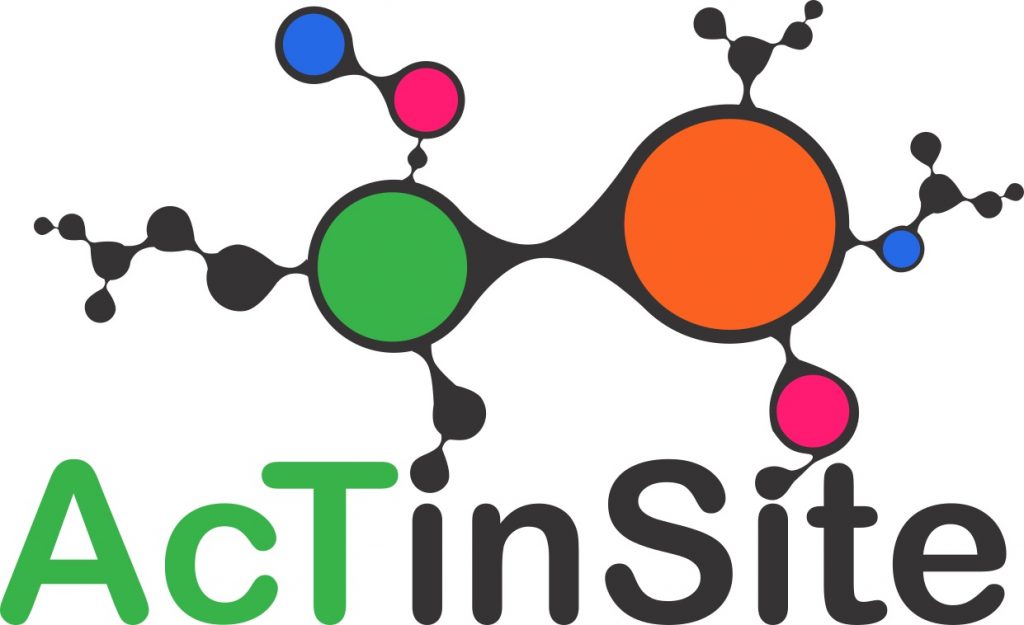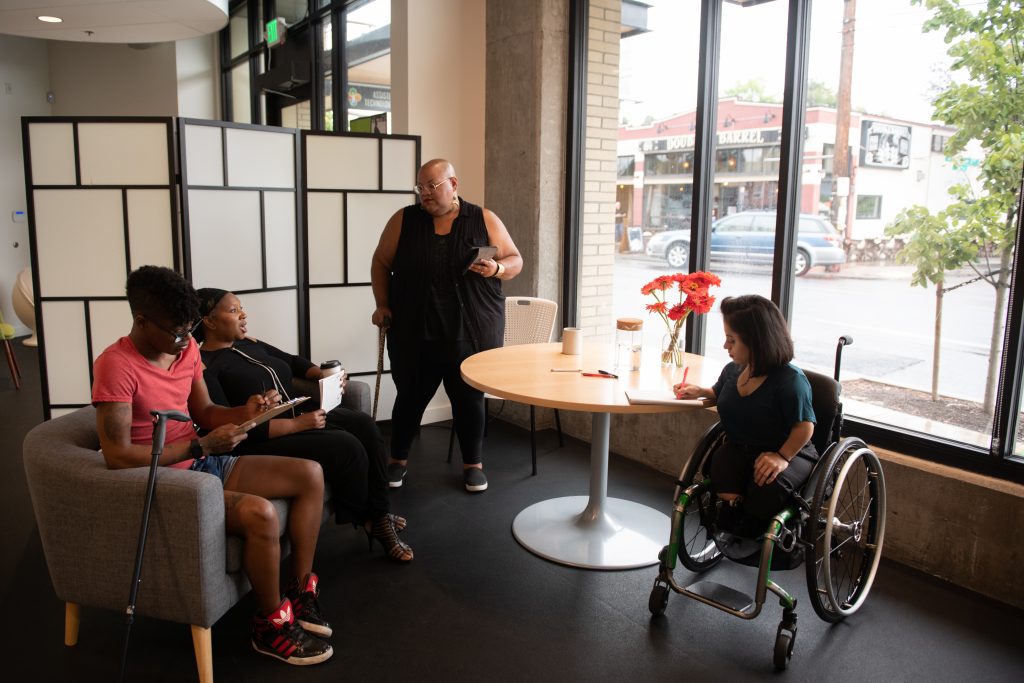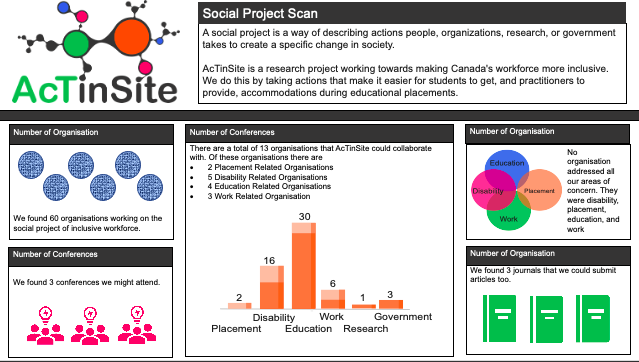Accessibility in Educational Placement for Students with Disabilities.
We at AcTinSite believe that diversity, equity and inclusion are essential in health care education. Not just in the services we provide, but also in work and training spaces. Universities and colleges have made progress in creating accessible spaces in classrooms. When the classroom is not accessible, universities and colleges offer accommodations. Accommodations are only one way students address accessibility. Yet, it is the area we focus on within this project.
With all this progress, there continue to be issues with accessibility and accommodations in placement sites. Since placements are a vital part of health care education, the lack of access becomes a barrier for disabled students. We are worried that the lack of access means that disabled students are less likely to finish their health care education or get work. To address these concerns, we at AcTinSite are doing a project to help manage access concerns in health care placement. We aim to change social and cultural ideas about disability so that access in placement becomes easier.

This project is called Accommodation to Include Students with Disability in Practicum Sites. Hereafter, the project is called AcTinSite. We aim to work in collaboration with people involved with student placements. Collaborators range from
- Placement managers,
- Administrators, and
- Staff who work in Accessibility Services.
To meet our aim, we will create a toolbox. Here stakeholders can find what is needed to support the inclusion of students with disabilities in placements. The expected stakeholders we plan to engage with are:
- Students with disabilities (with or without an official diagnosis),
- Placement managers at the education and placement institution, and
- Staff in Student Accommodation Services
Exploration!

To understand accessibility and accommodation in healthcare placement, we did an environmental search, a social project scan, and interviews. AcTinSite completed the environmental scan between the summer and fall of 2020. We found over a hundred document during the scan, but only Fifty-eight were related to accessibility and accommodation in placement. The scan for resources shows that much of the work for educational placement is happening within academic institutions. Yet, there was minimal details focused on and addressing accessibility and accommodations in placement.
Social Project map
The social project map explored organisations that were working on creating an inclusive workforce within Canada. We found a total of 60 organisations during this scan. Not a single organisation focused on accommodations in educational placement. However, some organisations had staff or departments that addressed accommodations or placement. In the rare case, there was a single staff person to support students with accommodations in placement.
Interviews

We did interviews with people who take part in health care placements. We had a total of 29 interviews in December 2020 and January 2021. We are looking at these interviews to find out what is going well, and not so well, with health care placements.
Collaborative Design
Collaborative design is a collaborative process where researchers and people interested in the project topic (often called stakeholders) identify problems and possible solutions. This process usually happens in stages. The first being information gathering, which you can see in the section above!

Then we begin a design process where different stakeholders and researchers come together. We are doing this through a design charette. A design charrette is like a series of workshops where stakeholders and researchers will re-think accessible education placement.
The design team takes the feedback from the design charette and begins to bring it into a platform or toolbox design in the next stage. We will regularly consult with stakeholders for input during the irrelative design process.
Finally, we have user testing, where stakeholders try out the design to see if it meets their needs or find out if there are any issues with the platform or toolbox.
Knowledge Mobilisation
Finally, we work on making sure some people want to use the designed tool. We found that disabled students do a lot of the work needed to make placement accessible during another project. To help address this concern, we are creating a community of practice for people whose job is to support health care placement. By building this community, we hope to make a space where practitioners can build motivation and skills to create more accessible placement sites.
If you want to hear more about the study and participate, please contact us by email or join our mailing list.

